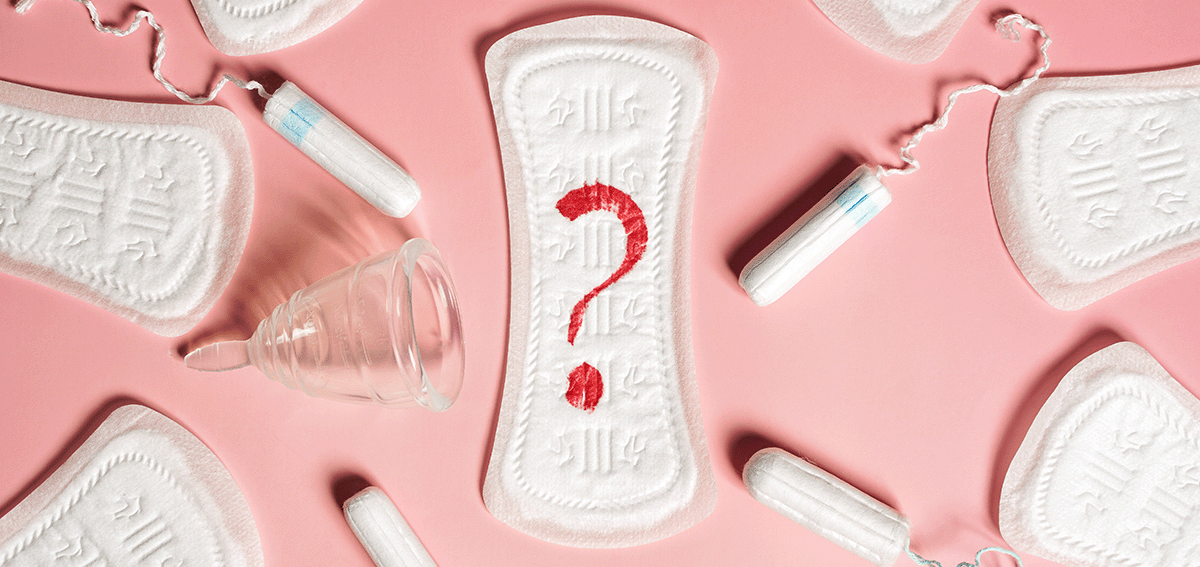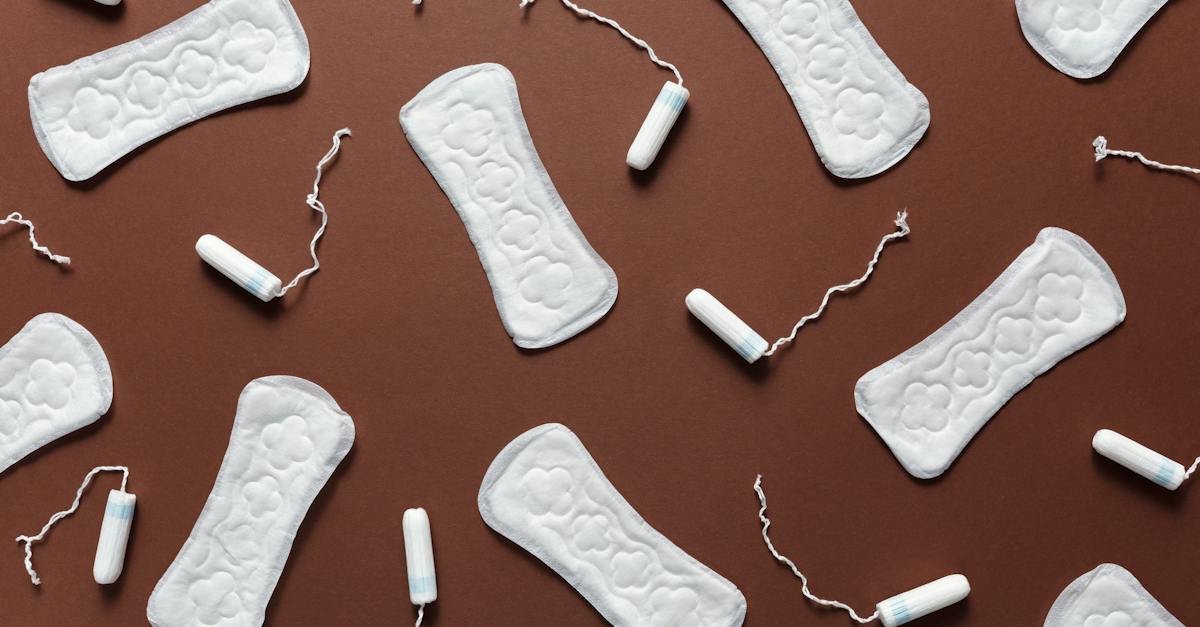Ladies, have you ever wondered when sanitary pads were invented? It’s fascinating to think about how far we’ve come in the last few decades. Gone are the days of uncomfortable belts and bulky pads. Today, we have access to pads that are not only more absorbent but also more comfortable and practical than ever before.

Contents
When Were Sanitary Pads Invented?
Sanitary pads, also known as menstrual pads, have a long history that dates back centuries. Women throughout history have used various materials, including papyrus, wool, and even rabbit fur, to manage their periods. However, the modern sanitary pad as we know it today was first invented in the 1920s.
During World War I, Kimberly-Clark, an American paper products company, developed a highly absorbent material called Cellucotton. Originally used for making bandages, Cellucotton was made from wood pulp and was five times more absorbent than cotton bandages, while also being more cost-effective.
It wasn’t until the 1950s that a revolutionary development in sanitary pads occurred. Mary Kenner, an African-American inventor, created the first sanitary belt with an adhesive to secure the pad in place. Her adjustable sanitary belt had a moisture-proof napkin pocket integrated into it, providing comfort and practicality. Unfortunately, due to racial discrimination, Kenner’s patent for the sanitary belt was dismissed for thirty years.
In the early 1970s, another significant breakthrough transformed the industry. Self-adhesive pads were invented, eliminating the need for the sanitary belt altogether. This innovation brought about a new era for sanitary pad designs and usage, making it easier and more convenient for women. By the 1980s, self-adhesive pads had become the most popular choice, and the use of belts rapidly declined.
Today, sanitary pads have come a long way from their humble origins. They are the most widely used menstrual products on the market, offering a variety of options in terms of size, absorbency levels, and designs. Adhesive wings keep pads securely in place, providing added comfort and confidence. Scented pads are also available, reducing any potential odor.
Early History of Menstrual Hygiene
Ancient Methods of Managing Menstruation
In the early history of menstrual hygiene, women relied on various methods to manage their menstrual flow. Ancient Egyptian medical records mention the use of papyrus, a plant material often used for creating woven goods, food, and paper. However, it’s important to note that these early methods may not have provided the comfort and reliability that modern sanitary pads offer.
The fifth century B.C. Greek physician Hippocrates described the use of wrapped lint around wooden plugs as tampons. This method, commonly used in Greece at the time, may have served as a form of contraception rather than solely for managing menstrual flow.
Other cultures also adopted unique methods. In ancient Japan, paper was used for absorption, while Native American women relied on buffalo skin and moss. As menstrual hygiene practices varied across different regions and cultures, the available materials and cultural attitudes towards menstruation played a significant role in shaping these methods.
Early Use of Cloth Pads
Before the advent of disposable pads, cloth pads were the primary option for managing menstruation. Women would use homemade rags made from woven fabric or flannel. However, concerns about bacterial growth arose as these cloth pads were reused and may not have been adequately cleaned between cycles.
Between 1854 and 1915, twenty patents were filed for menstrual hygiene products. This period saw the introduction of the first menstrual cups, rubber underwear, and Lister’s towels. The design of these early cloth pads often involved an absorbent liner covered with cotton wool or a similar fibrous rectangle. Special belts or girdles were worn to secure the pads in place.
It wasn’t until the late 19th century that disposable cotton pads began to emerge, offering a more convenient alternative to reusable cloth pads. These disposable options, however, were not widely embraced initially due to moral taboos surrounding menstruation.
The Advent of Disposable Sanitary Pads

Invention of the First Disposable Pad
The early 20th century marked a significant breakthrough in the realm of menstrual hygiene with the invention of the first disposable sanitary pad. Nurses in France originally crafted these pads from wood pulp bandages, which proved to be absorbent and cost-effective enough to be thrown away after use. Inspired by this ingenious idea, commercial manufacturers began producing their own versions of disposable pads.
In 1896, Johnson & Johnson introduced their commercial offering known as “Lister’s Towel: Sanitary Towels for Ladies.” These disposable pads were made from gauze and cotton, initially designed for use in maternity kits to absorb postpartum blood. Although the product failed to generate profit due to tight advertising restrictions at the time, it laid the groundwork for the future development of disposable menstrual products.
Commercial Production and Distribution
As the acceptance of menstrual products grew within urban communities, commercial production and distribution of disposable sanitary pads gained traction. Kotex, a prominent brand, developed disposable pads using absorbent creped cellucotton wrapped in gauze. These rectangular-shaped piles of absorbent material were carefully handcrafted and pinned onto a slim, fashionable belt. This ingenious design ensured that the pads stayed in place and could be easily changed.
Despite initial societal taboos surrounding the use of disposable pads, their convenience and practicality eventually won over menstruating women. By the early 1970s, a breakthrough occurred with the introduction of an adhesive strip that enabled pads to be easily stuck to underwear and removed when ready to be discarded. This innovative feature eliminated the need for belts, making disposable pads the preferred option for women.
Additionally, scented pads were introduced to the market, further enhancing the user experience. By the 1980s, belted sanitary napkins became virtually obsolete as the new belt-free disposable pads gained widespread popularity.
Menstrual Pads in Modern Times

In the modern era, menstrual pads have undergone significant advancements, revolutionizing menstrual care for women around the world. With the invention of disposable pads in the early 20th century, women were provided with a more comfortable and convenient option for managing their periods.
Thinner Designs and Improved Comfort: Over the years, menstrual pads have become increasingly thinner and more discreet, offering enhanced comfort during menstruation. The thinner designs allow for better flexibility and freedom of movement, ensuring a more comfortable experience.
Secure Placement with Wings: Many modern menstrual pads come with wings, which are adhesive flaps on the sides of the pad. These wings fold over the sides of the underwear to provide a secure and leak-proof fit. The wings keep the pad in place, preventing any unwanted movement and ensuring maximum protection.
Improved Absorbency and Dryness: Disposable pads now come with highly absorbent materials, such as advanced polymers, that can quickly lock away menstrual flow and keep the vaginal area dry. This not only provides a sense of cleanliness and comfort but also reduces the risk of infections by preventing moisture build-up.
Scented Options: In response to the desire for freshness and odor control, some menstrual pads are now available in scented varieties. These scents are specially formulated to mask any unpleasant odors, allowing women to feel more confident and at ease during their periods.
The availability and use of modern menstrual pads have not-only allowed women to manage their periods more effectively, but also played a crucial role in promoting feminine hygiene education and empowering women worldwide. Women now have access to a wide range of menstrual products that cater to their specific needs and preferences.
Frequently Asked Questions
What did ancient women use during their periods?
Ancient women may have used supple bags made of leather or linen, possibly filled with moss or other absorbent materials, as makeshift sanitary towels.
Why were tampons originally invented?
Tampons were originally invented to stop bleeding from injuries and apply medication, but in the 1920s, they were specifically designed to manage menstrual blood flow.
When did menstruation first develop?
Menstruation first developed in the anthropoid primate, our common ancestor with monkeys and apes, approximately 40 million years ago.
I am a medical student with experience and interest in Women’s health and well-being.